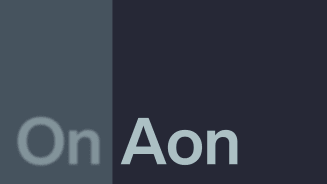
Podcast 23 mins
Better Being Series: Understanding Burnout in the Workplace
Four key factors drive pricing and changes in the insurance market: insurer results, capacity, reinsurance conditions, and insurer growth targets. In the current market, strong profitability, ample capacity, favourable reinsurance terms and insurers targeting growth mean conditions are friendly to buyers, offering competitive pricing and terms & conditions. Insurers view risks in the Nordics as being well managed and controlled in a region with low levels of litigation and only limited exposure to natural catastrophes.
Looking ahead to the rest of 2025 and into 2026, international insurers are expected to continue the growth of their portfolios in the Nordics, meaning buyer-friendly conditions will continue, although there are some exceptions. US liability remains a concern, with industries under ESG scrutiny also posing a challenge for directors and officers (D&O) insurers. New exposures in areas such as cargo shipments of electric vehicles, battery energy storage systems (BESS) and carbon capture technologies are being approached carefully, while trade credit market sectors like automotive and agribusiness are facing additional challenges. Lines of business where the market has been soft for some time, such as cyber, D&O and non-US liability, are expected to stabilise with reductions decelerating, while the recent softening trends in the property market are likely to continue.
As ever, a successful renewal depends on starting conversations early with brokers and key insurers and establishing the organisation’s risk appetite and risk tolerance. Underwriting discipline among insurers remains strong across all lines so, to take advantage of this softer market environment, it is important to provide up-to-date and detailed risk information, and to demonstrate robust risk management controls. This will help secure the best possible terms and position the business as the market evolves.
While the property insurance market has been challenging over recent years, 2025 has seen a significant shift in the market cycle, from a flattening of rates at the beginning of the year to today’s softening market. Rates are down from 1-10 percent and as much as 20 percent for some risks. Strong interest from London-based and international insurers in Nordic risks is helping to provide additional capacity, while local insurers are nearing the end of their de-risking strategies.
The Nordic property market has not suffered major losses this year to the same extent as in previous years. This trend supports the softening of the local property market in general, although the upper mid-market segment continues to encounter more challenging conditions. Underwriting standards remain disciplined with significant emphasis on up-to-date risk information and continuous improvements in risk management.
The broader softening trend across EMEA will continue to influence the Nordic market and create favourable conditions for insurance buyers, although longer-term challenges such as climate change and the geopolitical environment could start to impact the market beyond 2026/2027. The speed and magnitude of the softening will depend on each buyer’s risk profile, industry sector and claims history. Ahead of the next renewal, buyers should challenge their current programme structure and review the insurance coverage and limits that may have been cut during recent years of harder market conditions.
The liability insurance market is split between the risks exposed to the US tort system and the rest of the world. US-related liability risks are impacted by nuclear verdicts, litigation funding, and aggressive plaintiff tactics. This has led to adverse loss trends and unpredictable jury awards, especially for products like pharmaceuticals, chemicals, food, and electronics.
Outside the US, conditions are becoming increasingly favourable – with rates down 1-10 percent – but still focused on risk selection. Restrictions or exclusions for per- and polyfluoroalkyl substances (PFAS) continue, although PFAS is not reported to be a general treaty reinsurance exclusion. Shared placement solutions are also becoming increasingly common.
Placements with large US exposures will continue to be subject to rigorous underwriting and are likely to see price increases. US auto excess coverage attachment points are stabilising and, to some extent, showing signs of softening. For international casualty without US exposure, market conditions are favourable.
PFAS is still an area of focus for underwriters and is subject to broad exclusions. The underwriting approach and the need for exclusions are largely driven by industry types. Some sectors, such as chemical producers, food packaging, waste and recycling, and water utilities, will face automatic exclusions. If an insured can provide detailed risk information and show that adequate risk management procedures apply, an exclusion might not be required, or a buyback for specific coverage could be available.
The D&O insurance market remains extremely soft with plenty of capacity available. Even complex or challenging risks can secure competitive quotes and broad coverage. Insurers are aggressively trying to preserve their books, as well as looking to make up for the lost premiums on their renewal portfolio. These conditions persist despite the environment for directors and officers growing more complex. Aon’s latest Global Risk Management Survey underscores the shifting reality directors and officers face with cyber risk, for example, which is revealed as the number one current and future threat. Cyber is no longer just an IT issue but a critical challenge that affects a company's strategy, finances and reputation, and increases the responsibility and potential liability of the board or directors and management.
AI has introduced new risks for directors and officers. In February 2024, the first AI-related securities class action was filed in the US, with the defendant accused of misrepresenting their AI capabilities and their AI investments. Underwriters now tend to ask questions about the use of AI, such as their investment and the internal routines and guidelines established. Cyber attacks are accordingly growing more sophisticated and impactful, with a clear rise in social engineering fraud incidents involving deep fake technology. These threats are also matched by regulatory shifts, putting directors under greater personal responsibility for digital operational security.
There are signs of changes in the market, with some market stabilisation in the US, which will spill over into the UK, EMEA and the Nordic region. The latest Q3 statistics from Aon in the UK show the smallest average quarterly reduction of D&O rates in the last three years. The oversupply of capacity should continue throughout 2026 but in the next two or three years, capacity is likely to leave the market, especially in the excess segments.
2025 has remained soft for cyber cover. Plenty of insurer competition means that rates are still on the decline by as much as 10-15 percent. Some outliers are receiving rate reductions of as much as 50 percent. Excess positions remain more competitive with rate reductions of up to 20 percent. Looking at cyber globally, while it is still competitive, there are signs of stability in the market, which may trickle down into the Nordics.
Insurers are stretching their line sizes and being more aggressive towards first time buyers in order to mitigate for premium reductions. Market capacity on individual risks is somewhere between €10 million to €15 million, but some carriers can provide €25 million and upwards on primary positions. The market is also more focused on small revenue segments by utilising bulk quoting tools to make cyber more accessible and streamlined.
Security controls remain important for underwriting purposes, but insurers are starting to require less information than historically. Additionally, the time from submission to quote has significantly reduced, given that local underwriting authorities have increased over the past few years. However, we are starting to see the introduction of new types of underwriting questions related to AI and a specific focus on supply chain risk and third-party risk management.
Despite today’s geopolitical volatility – reflected in Aon’s Global Risk Management Survey which places supply chain risk as a top ten critical risk for businesses – the cargo insurance market is softening. Rates are down between 1-10 percent as carriers look to grow their share of Nordic risks, resulting in a market where there is plentiful capacity. Insurers are willing to discuss and accept broader cargo cover, including for static risks such as storage and stock throughput exposures, but risks are still subject to thorough and disciplined underwriting. Despite the softening, some areas are more challenged, however, such as the shipment of cars and electric vehicles, where rates are still in a hard market.
Easier access to capital will continue and the softening market will be a feature throughout 2026. Even for those cargo areas in a hard market, it’s expected that there will be some softening. Shared risk placements such as fronted and collaborative reinsurance solutions are becoming increasingly more common in the market.
There is plenty of interest in construction and renewable energy risks from international insurers and local Nordic markets, leading to abundant levels of capacity. London and EMEA-based carriers see the Nordics as a key growth opportunity given the region's leadership in terms of investment around the energy transition. This interest means that while the market is not yet soft – rate changes remain flat – there is some downward pressure on rates, especially for the more attractive risks with low natural catastrophe exposure and long-standing relationships with their insurers. It is, though, still a technical underwriting market and the provision of good, detailed risk information is key.
It is not yet clear whether the market will turn into a fully fledged soft market, but good risks will benefit most from the current market conditions. It is likely that the market will continue to take a prudent approach to risks with high natural catastrophe exposures or those involved with unproven technologies such as electric vehicle battery production, BESS, carbon capture and green hydrogen. There is not much movement on terms and conditions or deductibles, but these are areas to push as the market softens.
Despite signs of rising insolvency rates, current market conditions remain strong and pricing in the credit solutions area is down by 1-2 percent, indicating a slight softening while capacity remains at an all-time high. The impact of tariffs and how much of these costs can be passed on to customers has increased volatility which, in turn, has increased the demand for securing trade receivables. Although claims have remained at average levels, it’s likely that global uncertainty will lead to a more prudent underwriting approach.
The market outlook is still cautious due to rising levels of corporate insolvencies, meaning acceptance rates for credit limits are expected to decline. Global risk approval rates are stable at around 75 percent, but approvals vary by economy and sector. Automotive and agribusiness have had lower approval rates at 70 percent, while the technology sector – boosted by AI development – saw a 6 percent increase, reaching 84 percent. Adequate capacity is still expected to be available throughout 2026 due to new solutions being introduced in the market.
Malin Fredriksson
Head of Nordic Broking Centre and CBO Aon Nordics
[email protected]
Jenni Valkeapää
Head of Property, Aon Nordics
[email protected]
Lill Skogli
Head of Casualty, Aon Nordics
[email protected]
Solveig Dalseg
Head of Financial Lines, Aon Nordics
[email protected]
Arian Mohajer Soltani
Cyber/Tech PI Broking Leader Nordic, Aon Nordics
[email protected]
Patrik Almström
Head of Cargo & Logistics, Aon Nordics
[email protected]
Donais Deetz
Head of Construction and Renewable Energy, Aon Nordics
[email protected]
Tiia Sirviӧ
Head of Credit Solutions, Aon Nordics
[email protected]
General Disclaimer
The information contained herein and the statements expressed are of a general nature and are not intended to address the circumstances of any particular individual or entity. Although we endeavor to provide accurate and timely information and use sources we consider reliable, there can be no guarantee that such information is accurate as of the date it is received or that it will continue to be accurate in the future. No one should act on such information without appropriate professional advice after a thorough examination of the particular situation. FP.AGRC.2025.340.GG
Terms of Use
The contents herein may not be reproduced, reused, reprinted or redistributed without the expressed written consent of Aon, unless otherwise authorized by Aon. To use information contained herein, please write to our team.
Our Better Being podcast series, hosted by Aon Chief Wellbeing Officer Rachel Fellowes, explores wellbeing strategies and resilience. This season we cover human sustainability, kindness in the workplace, how to measure wellbeing, managing grief and more.
Expert Views on Today's Risk Capital and Human Capital Issues
Expert Views on Today's Risk Capital and Human Capital Issues
Expert Views on Today's Risk Capital and Human Capital Issues
Better Decisions Across Interconnected Risk and People Issues.
The construction industry is under pressure from interconnected risks and notable macroeconomic developments. Learn how your organization can benefit from construction insurance and risk management.
Stay in the loop on today's most pressing cyber security matters.
Our Cyber Resilience collection gives you access to Aon’s latest insights on the evolving landscape of cyber threats and risk mitigation measures. Reach out to our experts to discuss how to make the right decisions to strengthen your organization’s cyber resilience.
Our Employee Wellbeing collection gives you access to the latest insights from Aon's human capital team. You can also reach out to the team at any time for assistance with your employee wellbeing needs.
Explore Aon's latest environmental social and governance (ESG) insights.
Our Global Insurance Market Insights highlight insurance market trends across pricing, capacity, underwriting, limits, deductibles and coverages.
Better Decisions Across Interconnected Risk and People Issues.
How do the top risks on business leaders’ minds differ by region and how can these risks be mitigated? Explore the regional results to learn more.
Trade, technology, weather and workforce stability are the central forces in today’s risk landscape.
These industry-specific articles explore the top risks, their underlying drivers and the actions leaders are taking to build resilience.
Our Human Capital Analytics collection gives you access to the latest insights from Aon's human capital team. Contact us to learn how Aon’s analytics capabilities helps organizations make better workforce decisions.
Read our collection of human capital articles that explore in depth hot topics for HR and risk professionals, including using data and analytics to measure total rewards programs, how HR and finance can better partner and the impact AI will have on the workforce.
Explore our hand-picked insights for human resources professionals.
Our Workforce Collection provides access to the latest insights from Aon’s Human Capital team on topics ranging from health and benefits, retirement and talent practices. You can reach out to our team at any time to learn how we can help address emerging workforce challenges.
Our Mergers and Acquisitions (M&A) collection gives you access to the latest insights from Aon's thought leaders to help dealmakers make better decisions. Explore our latest insights and reach out to the team at any time for assistance with transaction challenges and opportunities.
The challenges in adopting renewable energy are changing with technological advancements, increasing market competition and numerous financial support mechanisms. Learn how your organization can benefit from our renewables solutions.
How do businesses navigate their way through new forms of volatility and make decisions that protect and grow their organizations?
Our Parametric Insurance Collection provides ways your organization can benefit from this simple, straightforward and fast-paying risk transfer solution. Reach out to learn how we can help you make better decisions to manage your catastrophe exposures and near-term volatility.
Our Pay Transparency and Equity collection gives you access to the latest insights from Aon's human capital team on topics ranging from pay equity to diversity, equity and inclusion. Contact us to learn how we can help your organization address these issues.
Forecasters are predicting an extremely active 2024 Atlantic hurricane season. Take measures to build resilience to mitigate risk for hurricane-prone properties.
Our Technology Collection provides access to the latest insights from Aon's thought leaders on navigating the evolving risks and opportunities of technology. Reach out to the team to learn how we can help you use technology to make better decisions for the future.
Our Trade Collection gives you access to the latest insights from Aon's thought leaders on navigating the evolving risks and opportunities for international business. Reach out to our team to understand how to make better decisions around macro trends and why they matter to businesses.
Better Decisions Across Interconnected Risk and People Issues.
With a changing climate, organizations in all sectors will need to protect their people and physical assets, reduce their carbon footprint, and invest in new solutions to thrive. Our Weather Collection provides you with critical insights to be prepared.
Our Workforce Resilience collection gives you access to the latest insights from Aon's Human Capital team. You can reach out to the team at any time for questions about how we can assess gaps and help build a more resilience workforce.

Article
With the strong market, reinsurers must deepen insurer partnerships, use capital to create a more sustainable market and lean into a changing risk landscape.

Report
As more companies become comfortable using captives and understanding the value they add, captives are likely to become further embedded into corporate risk strategies, regardless of market conditions.

Article
Overview of the current trade credit insurance market and outlook on trend developments.